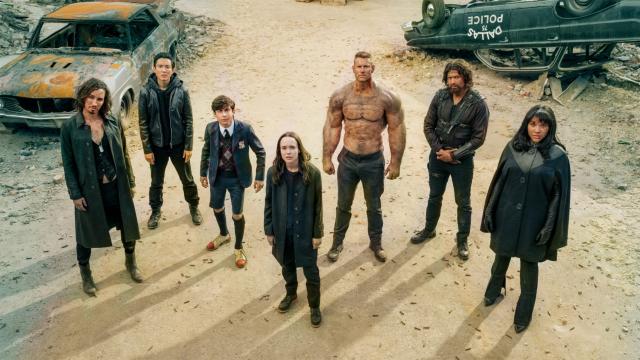We’ve already counted up our best and worst TV shows of 2020. But now we’re getting micro-focused on those special (and not-so-special) TV moments that made us laugh, cry, shriek, recoil, rewind, and make memes. You know, the ones that remained burned in our memories long after the episode or season ended. Behold!
Best

Star Trek: Lower Decks, Mariner vs. Holo-Mariner
Beckett Mariner spends much of Lower Decks’ first season struggling to reconcile the disaffected, sarcastically “cool” persona she projects with her earnest desire to be the best Starfleet officer she can be for her friends and family aboard the Cerritos. That conflict becomes a bit more literal in the show’s excellent pastiche of Star Trek’s cinematic history when at its climax, Mariner — who’s cast herself as the Khan-esque villain in a holodeck movie about the Cerritos — is forced to battle, and ultimately lose to, a holographic version of her true self. It’s not just a hilarious sendup of Star Trek’s past on the big screen, but a galvanising moment for the character that utilises some Trek-as-hell nerdery to make a personal moment of growth actually tangible. — James Whitbrook
[referenced id=”1521129″ url=”https://gizmodo.com.au/2020/10/lower-decks-mike-mcmahan-on-how-information-is-the-human-heart-of-star-trek/” thumb=”https://gizmodo.com.au/wp-content/uploads/2020/10/20/ctvgozwq0c0hjplveyge-300×169.png” title=”Lower Decks’ Mike McMahan on How Information Is the Human Heart of Star Trek” excerpt=”We remember the original Star Trek: The Next Generation episode “Lower Decks” for the unique novelty of its unlikely ensign stars. While that idea (and name) might have provided the framework for the animated Star Trek: Lower Decks, for its showrunner the series, like the episode itself, is more fascinated…”]
Star Trek: Picard, Seven of Nine gets her vengeance
Getting to see an older, wiser, and sadly, traumatised, version of Seven of Nine on Star Trek: Picard was one of the series’ most fascinating examinations of Trek’s past. Having spent much of her debut restraining her desire, on Picard’s idealised behalf, to take out the people responsible for the death of her adopted ex-Borg son Icheb, “Stardust City Rag” culminates with Seven letting her mask fall. With Picard mollified into thinking he’s gotten through to her, she beams back down to the bar of her former ally Bjayzl and allows her grief to be out in the open, gunning Bjayzl and her goons down in a sea of phaser fire. It’s a powerful moment, but it’s how Seven frames it as sacrificing her own idealism to maintain Picard’s that makes it such a gut punch. — James Whitbrook
The Mandalorian, end credits scene
Season two of The Mandalorian was filled with excellent moments: the Krayt Dragon battle, the appearance of Ahsoka Tano, the return of Boba Fett…basically anything with Baby Yoda/Grogu. But one that stood out was when Star Wars took a cue from Marvel and delivered a shocking, awesome, post-credits scene. Coming off the intense emotions of the season finale, suddenly we’re back at Jabba’s Palace. Bib Fortuna is now on the throne and he’s shocked when Fennic Shand arrives along with her pal Boba Fett. After Boba dispatches poor Bib and takes a seat on Jabba’s throne, a title card reveals that a Boba Fett show is coming to Disney+ in 2021. There was just something about seeing the past, present, and future all rolled into one that made the scene unforgettable. — Germain Lussier
[referenced id=”1659810″ url=”https://gizmodo.com.au/2020/12/boba-fett-is-getting-his-own-star-wars-show-in-2021-yes-really/” thumb=”https://gizmodo.com.au/wp-content/uploads/2020/12/22/upqxvstqsdxxr3anhyyk-300×169.jpg” title=”Boba Fett Is Getting His Own Star Wars Show in 2021 (Yes, Really)” excerpt=”So, that thing Disney decided to keep fans in suspense over this past weekend? They just confirmed it.”]
Doctor Who, the Timeless Child revealed
You don’t make it through nearly 60 years of TV without taking some big swings, but this year Doctor Who made one of its biggest in years with a fundamental re-imagining of not just the Doctor’s entire past, but their entire species. “The Timeless Children” picked apart the mythos of the Time Lords to reveal a whole new world of potential for the Doctor and for the audiences — lives lived unexplored before who we thought was the “first” incarnation, and an expression of relieved joy on the Thirteenth Doctor’s behalf as she is not broken by the revelation, but inspired by discovering the truth of who she is. Now we must wait and see what Doctor Who really does with such a fascinating opportunity. — James Whitbrook
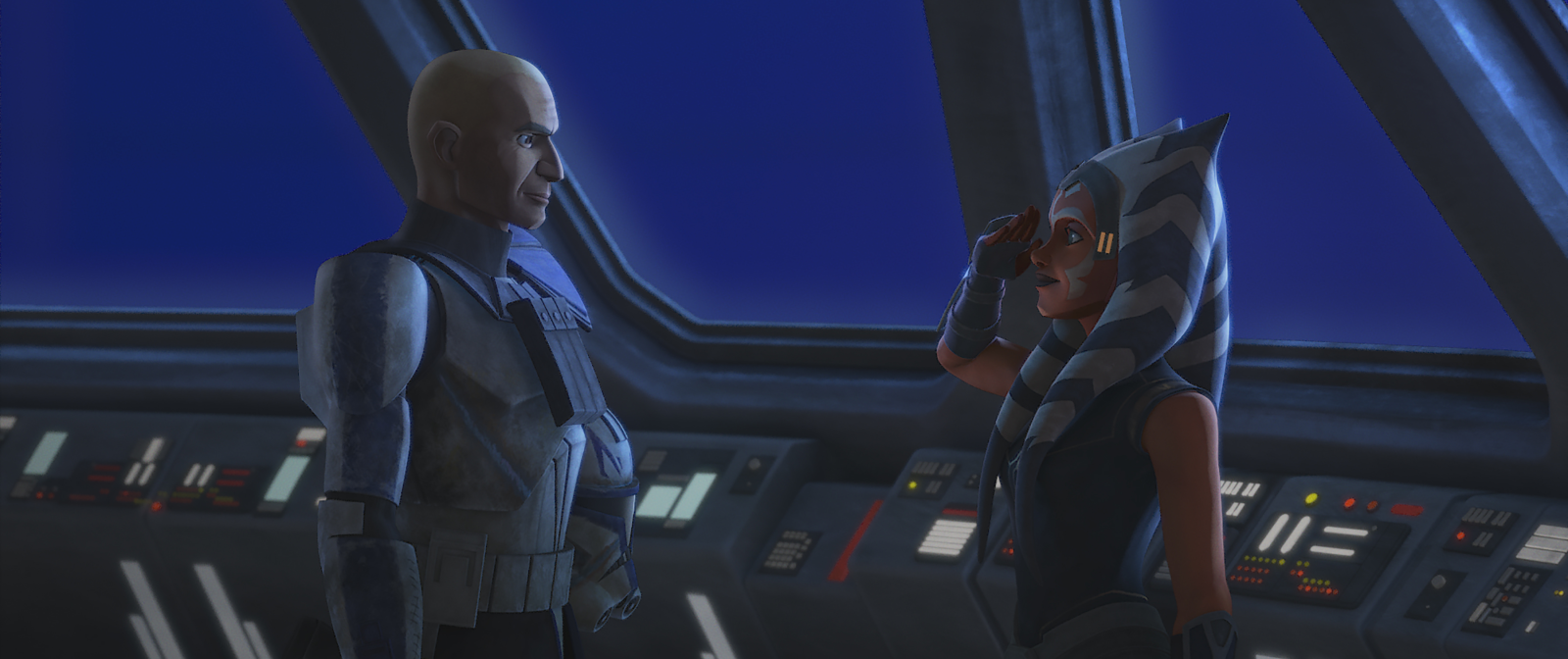
Star Wars: Clone Wars, good soldiers follow orders
There is so much to love in The Clone Wars’ final arc that calling out just one moment feels impossible, but the actual moment of Order 66 as it plays out is one of the show’s biggest dramatic highs. There was a chance Clone Wars could indulge here, recreating the tragic fall of the Jedi seen in Revenge of the Sith in its own style. But rightly so, it sidestepped the easy, nostalgic way out to focus on the drama of that sudden betrayal on what mattered most to the show itself: the bond between Ahsoka Tano and Captain Rex, one tested to its limits here. Even though we knew they’d both make it out, it was still mesmerising to watch Rex succumb and to see Ahsoka struggle to survive as she fought former friends. — James Whitbrook
The Expanse, asteroid attack
It finally happened. It’s a moment Expanse book fans have been hoping to see since the series began — and that TV fans have known was coming since season four ended. While much of The Expanse’s action to date has taken place in far-flung parts of the solar system, now there’s a new focus on Earth, a planet that’s no longer the homeworld for all of humanity but has maintained its sense of superiority…until it comes under attack by a hail of asteroids, launched by a Belter faction that’s long been planning a strike on a level never considered possible. The first hit comes at the very end of season five’s third episode, “Mother” — a blazing entrace off the coast of Africa — and the devastation it all brings changes the game forever moving forward. — Cheryl Eddy
[referenced id=”1659868″ url=”https://gizmodo.com.au/2020/12/the-expanses-cara-gee-and-shohreh-aghdashloo-on-playing-powerful-women-in-sci-fi/” thumb=”https://gizmodo.com.au/wp-content/uploads/2020/12/22/nwusqevnfgoq7zkstuy8-300×195.jpg” title=”The Expanse’s Cara Gee and Shohreh Aghdashloo on Playing Powerful Women in Sci-Fi” excerpt=”The Expanse’s Camina Drummer (Cara Gee) and Chrisjen Avasarala (Shohreh Aghdashloo) may never cross paths; Drummer captains a salvage crew in the Belt, while diplomat Avasarala watches out for Earth. But the characters have some crucial traits in common, like the fact that they’re both total badasses.”]
The Outsider, Jack versus his dead mother
HBO’s Stephen King series had a lot of memorable moments, which is odd considering it feels like The Outsider came out five years ago (that’s what you get for airing your season finale in early March 2020). But one that stuck with us came in the pivotal, Karyn Kusama-directed sixth episode, which saw Jack Hoskins (Marc Menchaca) — a small-town detective who was already pretty damn troubled even before the series’ shape-shifting murderer forced him into servitude — was confronted by the malevolent entity in its latest form: Jack’s abusive mother, back from the grave to deliver a supernaturally enhanced beating that’s both humiliating and gut-wrenchingly grotesque. — Cheryl Eddy
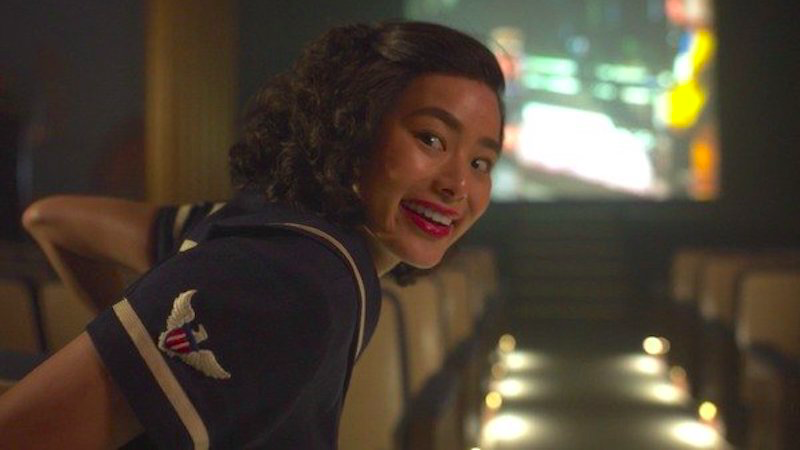
Lovecraft Country, Ji-Ah’s performance
Though Lovecraft Country ultimately did Jamie Chung’s Ji-Ah rather dirty, the actress’ performance in the opening moments of “Meet Me in Daegu” was one of the first season’s shining lights that gave you the tiniest glimpse of the tighter, more well-executed show Lovecraft Country could have been.
Even before the episode properly gets into showing you what kind of person Ji-Ah is and the personal demons she carries, Chung’s musical number gives you a sense of the longing for freedom she feels so strongly and the vibrant energy that draws people to her. Chung’s approach to Ji-Ah and the way Lovecraft Country handled her character made her one of the series’ few monsters with any sort of real emotional depth that made you understand and care for them. — Charles Pulliam-Moore

Rick and Morty, Jerry grabs the wrong remote
There’s a lot to love about Rick and Morty’s Emmy-winning “Vat of Acid Episode,” a series standout that underlines just how ridiculously far Rick will go to win an argument. But there’s one moment that’s both a gut-punch and hysterically funny all at once, not to mention the perfect encapsulation of a character in a single gesture. It comes when Jerry — Morty’s eternally uncool father — drops the TV remote and accidentally picks up Rick’s do-over doohickey that, after a lot of irresponsible usage and some incredible hardships, Morty has finally learned to live without. With the mash of a single button, Jerry completely resets his son’s over-the-top survival story, starting a new timeline and, perhaps worst of all, leaving only Morty (and us) painfully aware of all that has been lost. — Cheryl Eddy
She-Ra and the Princesses of Power, Catra and Adora kiss
This was a moment five seasons in the making. Having found themselves facing the end of the world, Catra and Adora finally confessed their love for each other, sealing their bond with a kiss. But it wasn’t just any kiss, it was a kiss that saved the universe. Adora and Catra’s love was the final piece in destroying Horde Prime and restoring peace to the world. Beyond that, it was wonderful to see two same-sex protagonists of a series grow and strengthen their bond over several seasons…and then actually end up together. It’s something that sadly doesn’t happen often on television. Hopefully, shows like She-Ra will inspire others to embrace giving LGBTQ love stories the spotlight, instead of relegating them to side characters. — Beth Elderkin
Harley Quinn, Ivy escape/kiss
Speaking of LGBTQ love stories…DC Universe’s Harley Quinn continued to kick all kinds of arse in its second season but what we were most excited for was something that had been teased earlier — and not teased in the way so many LGBTQ ships are. We knew for sure Harley and Poison Ivy were going to get together but the journey we took to get there was wondering and refreshing. By the time the two found themselves stuck in Bane’s unusual prison, things had come to a head in their relationship so it wasn’t really a surprise that Harley took the dramatic situation that was their firey escape to plant one on Ivy. It was beautiful. — Jill Pantozzi
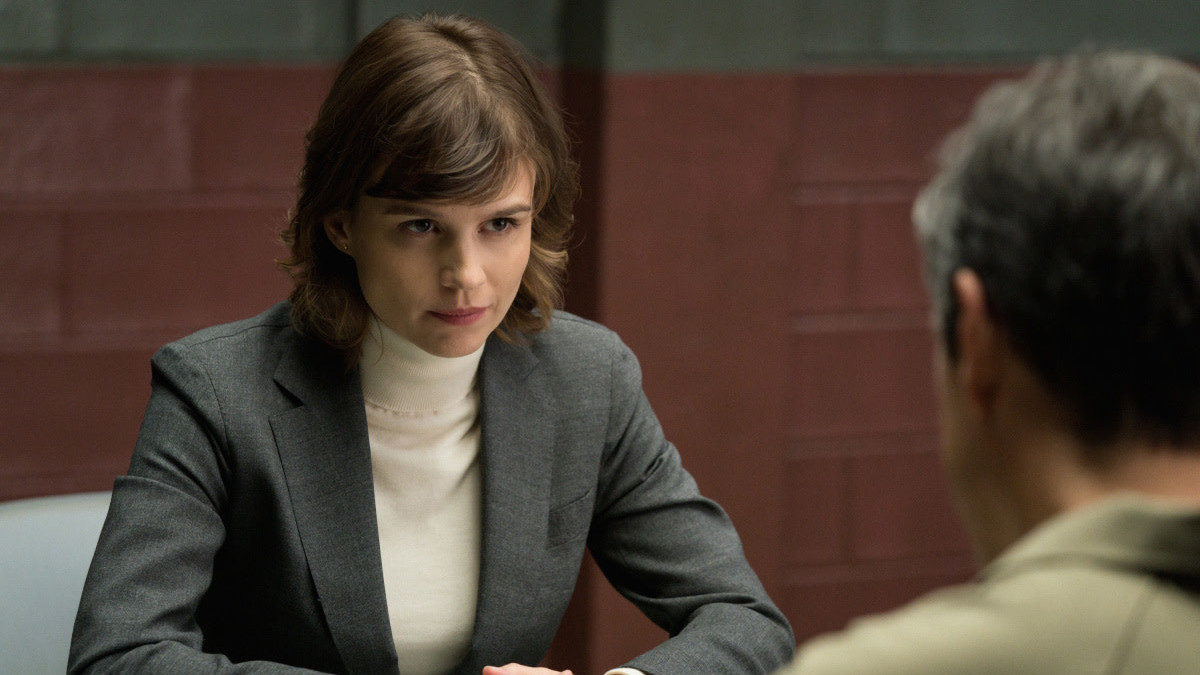
Evil, that finale reveal
CBS horror drama Evil hit its stride early in its first season, matching a strong cast (including Katja Herbers, Mike Colter, and Michael Emerson) with an intriguing plot about supernatural investigators working for the Catholic Church. It blended monster-of-the-week type episodes with an ever-growing broader mythology that probed evil not just from a religious standpoint, but with the timely POV that things like social media can bring out the very darkest impulses in vulnerable souls. The season finale, however, uprooted everything by suggesting Herbers’ character — a forensic psychologist who’s mostly solo-parenting her four young daughters — might have succumbed to some very dark forces. The fact that her status (vindictive murderer, demonically possessed, just randomly blood-splattered, what?) remained tantalisingly ambiguous when the episode ended, served to set up — pun intended — a hell of a season two. — Cheryl Eddy
Steven Universe Future, Kaiju hug
In some ways we shouldn’t be surprised Steven Universe Future culminates not in an epic battle, but the simple act of one person reaching out to another in comfort. After all, the show has been defined by Steven’s own willingness, in spite of everything, to reach out a hand of compassion. But there was something remarkable in the fact that the emotional climax of the epilogue series Future saw that trope of Steven Universe inverted and turned on Steven himself. Literally transformed into something monstrous by the lingering trauma of his long fight against the Gem Homeworld, his gigantic form is not defeated by his friends coming together in a knock-out brawl, but a moment of understanding and kindness as he is embraced, acknowledged and ensured of the validity of his tempestuous emotions. — James Whitbrook

Locke & Key, the Head Key
Oh sure, Locke & Key is a cool little show about family struggles and growing up. But it also is a showcase for incredibly awesome keys that do wondrous things — and of them, the Head Key is by far the coolest. At the moment we first see it used, we enter the mind of the young boy Bode, which is like a disco arcade amusement park filled with every colour imaginable. It’s pure visual happiness. A place anyone would love to visit and walk around in. That imagery, juxtaposed with the strikingly different, slightly more gothic, haunted house aesthetic of the rest of the show, makes the scene instantly memorable. The fact that the Head Key plays such a huge role in the overall story helps too, of course. Going into Bode’s head first, you’ll never forget exactly what it is that key can do. — Germain Lussier
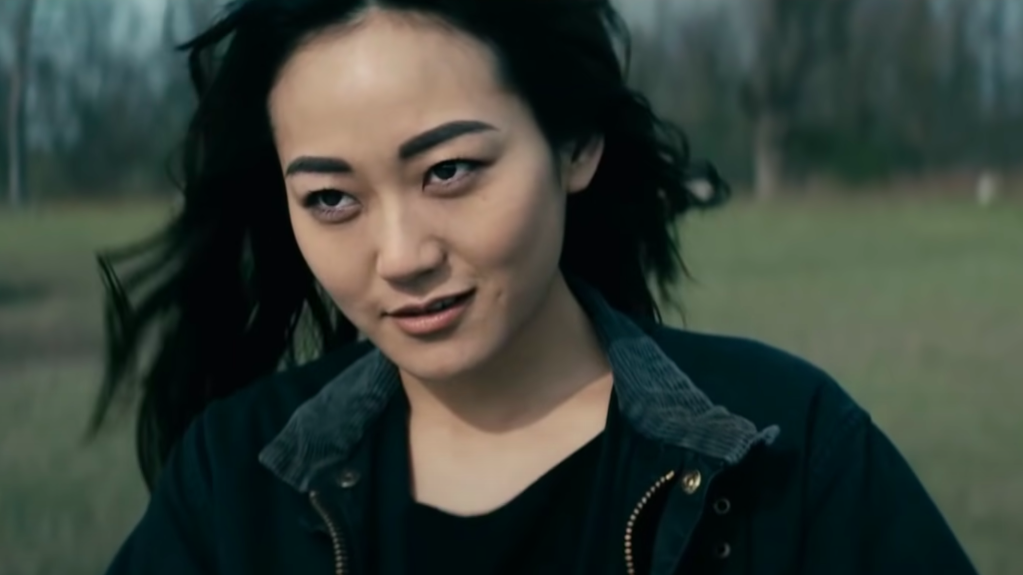
The Boys, a Nazi gets beat
Because we live in an era where even the tiniest bit of subtlety often leads to people missing the point of shows like The Boys’ depiction of Nazis, the series had to make it abundantly clear before the second season’s end that they are, in fact, monstrous villains who cannot be reasoned with. After laying out the sort of large scale societal harms that Stormfront’s bigoted thinking can lead to and giving the villain a number of opportunities to damn-near kill the heroes, The Boys wrapped things up by bringing everyone together to gang up on Stormfront and beat the crap out of her together.
Much as The Boys played the scene for laughs and a sendup of the Marvel’s milquetoast attempt at female empowerment, it was also a rather straightforward reminder that a.) Nazis are bad and b.) people should feel comfortable banding together to take a firm stance against them. These things shouldn’t need explaining, and yet…here we are. — Charles Pulliam-Moore
[referenced id=”1268138″ url=”https://gizmodo.com.au/2020/08/the-boys-new-big-bad-is-almost-too-on-the-nose-for-these-extraordinarily-racist-times/” thumb=”https://gizmodo.com.au/wp-content/uploads/2020/08/21/klcglj8dv8mxuudphepp-300×169.png” title=”The Boys’ New Big Bad Is Almost Too on the Nose for These Extraordinarily Racist Times” excerpt=”Look to your left. Now look to your right. Did you see a Nazi? If you were reading and/or watching The Boys in anticipation of the developments coming in the second season, chances are good your answer’s a resounding “Ugh, yeah. I do.” Our deepest condolences.”]
Umbrella Academy, season two’s opening
The Umbrella Academy’s adaptation has been a pretty unique comic book TV show in a sea of them so far, and season two opened with a superhero bang. Our family of heroes went back in time but when we find them first, they’re in the midst of a battle taking place sometime later. It was exactly the kind of thing comic book fans love to see: a team of powerful heroes fighting an apocalypse scenario. Vanya, Luther, Diego, Allison, Klaus, and Ben were absolutely in the zone and using their powers together like never before…but then that nuke was about to drop. A lot of time shenanigans later and things thankfully didn’t turn out so dire — or so cool — but the opening montage set to Frank Sinatra’s “My Way” will be burned into our brains for a long time to come. — Jill Pantozzi
Legends of Tomorrow, “KHAAAAN!”
Legends of Tomorrow gave us a surprisingly thoughtful meta episode in “The One Where We’re All Trapped on TV,” which parodied shows like Downton Abbey and Friends as the Legends grappled with the comfort and blissful ignorance of nostalgia. But that doesn’t mean everything was designed to teach the Legends (and audience) a lesson; some of it was just plain fun. The greatest moment was during the Star Trek parody, which saw Sara and Ava doing their “best” Kirk and Spock impressions. In the midst of their dialogue, we got an appearance from none other than a delightfully Khan-esque Mick Rory — with a gloriously bad wig, half-open shirt, and tendency to make Sara yell his name to the heavens. It was perfectly cheesy, which made it perfectly Legends. — Beth Elderkin
What We Do in the Shadows, Jackie Daytona
He’s definitely not an ancient vampire who fled Staten Island rather than repay a debt to his old (vampire) landlord. No, Jackie Daytona (Matt Berry) is just a regular human bartender (you can tell he’s human by the toothpick) who happens to own a raucous bar in small-town Pennsylvania (which only sounds like Transylvania), drives a pick-up truck, supports the local women’s volleyball team, fights off the riff-raff (actually a bunch of dads on a charity motorcycle ride), and makes sure the jukebox is well-stocked with Robert Palmer tunes. Look, we had a hard time picking one greatest hit from What We Do in the Shadows. It might as well be the episode featuring the year’s other big Mark Hamill cameo, right? — Cheryl Eddy
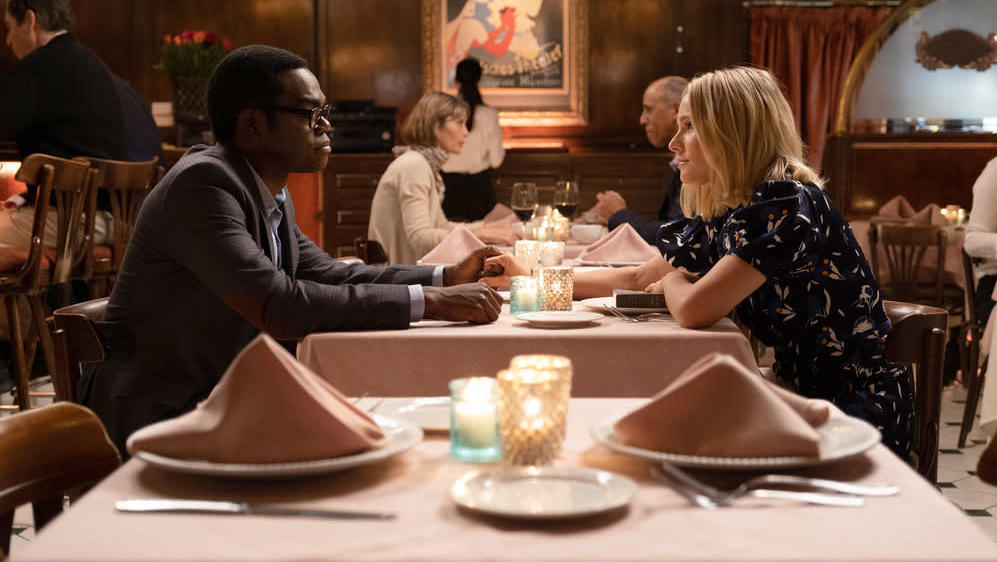
The Good Place, Chidi’s goodbye
The series finale of The Good Place was a tough pill to swallow. On one hand, it was wonderful to see the Soul Squad spending their Jeremy Bearamies doing the things they loved with the people they cared about. But the whole point of the journey was that it could come to an end. Nowhere was this more heartbreaking than with Eleanor and Chidi, as Chidi found himself ready to venture through the mysterious door and disappear from the Good Place forever before she did. Eleanor tried hard to convince him to stay, but eventually, she knew it was his time. They spent one last beautiful night together — and then, in a moment that still brings me to tears, she asked him to leave without waking her up because she didn’t know how to say goodbye. Eleanor woke up to an empty bed, with one exception: a Sexy Chidi calendar on her pillow. It was adorable, and so delightfully them, but it didn’t lessen the pain of seeing their love story come to an end. — Beth Elderkin
[referenced id=”1659198″ url=”https://gizmodo.com.au/2020/12/the-pop-culture-highlights-and-lowlights-of-2020/” thumb=”https://gizmodo.com.au/wp-content/uploads/2020/12/18/fp88kijweah7l9r6lxoi-300×169.jpg” title=”The Pop Culture Highlights and Lowlights of 2020″ excerpt=”In a year full of all kinds of bad real-world news, pop culture still managed to poke its head up periodically to remind us that not everything sucks. Of course, this being 2020, that same realm also managed to leave a few steaming piles for us to step in, too….”]
Worst
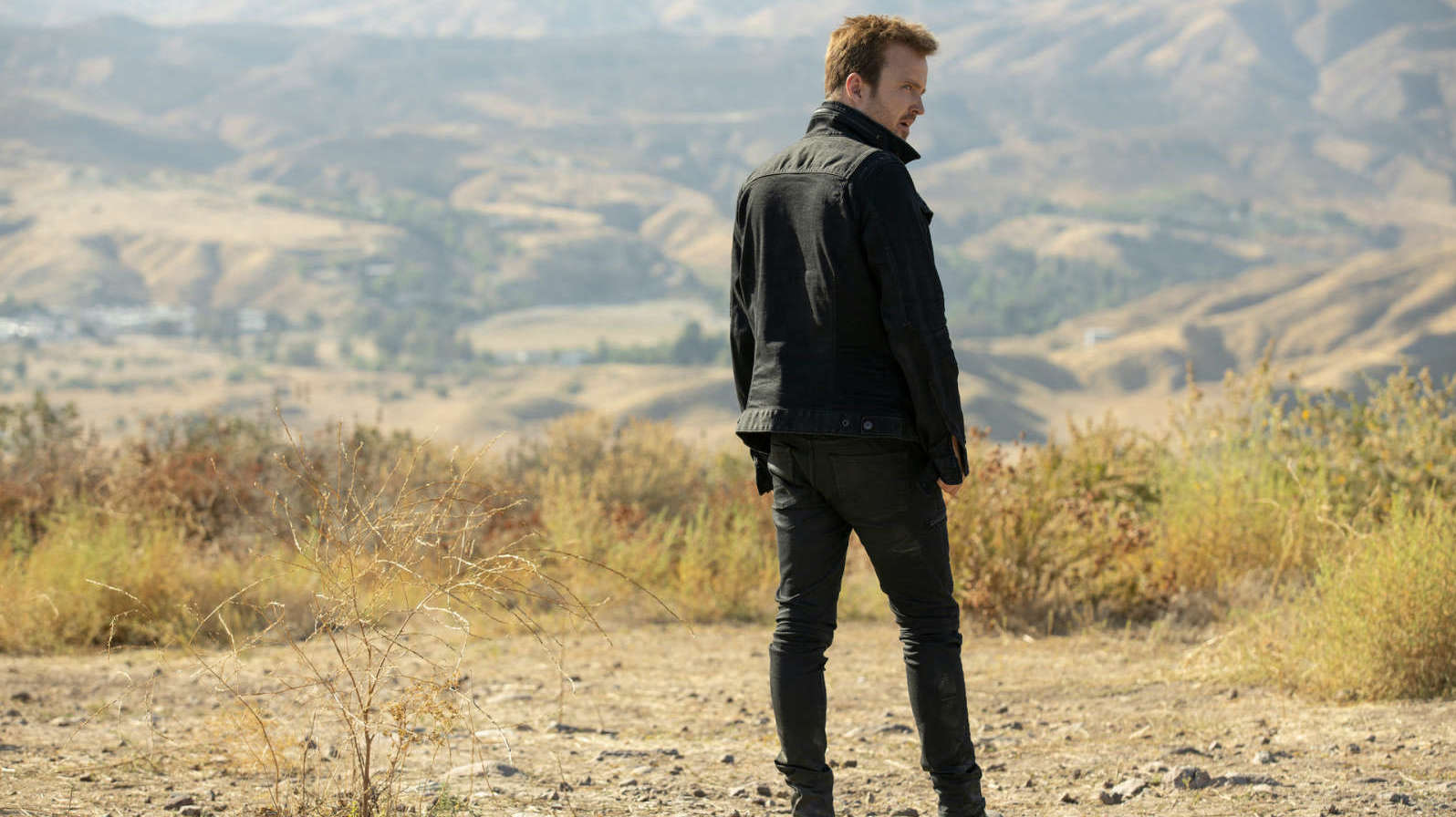
Westworld, the Manchurian Caleb
Westworld spent much of season three teasing some big shocking truth about Caleb (Aaron Paul), hinting that there was more to this everyman’s story that we could possibly realise. Well, in episode seven things finally came to light, and it was…whatever it was. It turned out Caleb was an “outlier,” someone who couldn’t be controlled by Soloman-Rehoboam’s predictive algorithms. Serac, in his attempts to rid the world of uncertainty and crime, brainwashed Caleb along with all his other apprehended outliers…and then reconditioned him to hunt others who were still on the loose. It wasn’t shocking — anyone could tell he was under some kind of influence — nor was it interesting enough to overcome its own blasé predictability. In the end, it was the kind of Manchurian Candidate backstory we’ve seen so many times before, with a little bit of Divergent thrown in there for flavour. — Beth Elderkin
Dragon’s Dogma, goblin rape
Netflix’s Dragon’s Dogma anime is a fundamental misunderstanding of why people love the cult classic Capcom RPG in many ways, trading the fantastical, shared storytelling vibes of the game’s open-world for discount Game of Thrones edgelord trappings. That’s nowhere more clear than in an episode that opens with the heroes Ethan and Hannah stumbling upon a small caravan of humans being waylaid by goblins…goblins who then proceed to capture the lone female member of the group, titillatingly undressing her, and attempting to sexually assault her. It’s meaningless and unnecessary in the context of the show and out of it, and a shameful attempt at adding a cynically gritty “realism” that Dragon’s Dogma didn’t need. — James Whitbrook
Star Trek: Picard, Jean-Luc’s new body
So much of Star Trek: Picard’s first season is about interrogating the mythos of its hero’s legendary persona. What good has Jean-Luc Picard, the myth, done, and what damage has trying to cling on to that image been imparted on the people around him, and the galaxy at large? If Picard was a single-season show and culminated with our hero accepting sacrificing himself for Soji and her android siblings, maybe any of it would’ve mattered — but Picard isn’t, so we got a magical ending that basically declares that Jean-Luc is Too Good to be allowed to sacrifice himself, the slate of his biological ticking time bomb swiped clean with a shiny new android body, better than ever. It undid so much of the smart interrogation of Jean-Luc’s image the show laid the groundwork for — and if it was never going to end in actually following up on it, why even raise those questions in the first place? At least then Picard would’ve been honest in its nostalgia. — James Whitbrook
The Mandalorian, Luke arrives
Look. You’re going to hate us. You’re probably grabbing a pitchfork right now in indignation. But hear us out: yes, Luke owning a bunch of Dark Troopers as he X-Wings in to save Grogu, Din, and the gang is cool as hell. It’s also something that’s very much what the Luke of this period of Star Wars would do, a Jedi at his apex, reaching out because someone reached out to him in the Force. Even with the…let’s say only partially successful de-ageing techniques to capture Luke at his prime, it is a powerful, emotional moment of catharsis.
But it still makes Star Wars’ galaxy feel so debilitatingly small as Din Djarin adds the biggest hero of the Skywalker Saga to his personal Rolodex, sandwiched between the likes of Ahsoka Tano, Bo-Katan, and Boba Fett. Maybe there were other ways to reference Luke without his direct involvement, maybe there were ways for Grogu to be rescued by a Jedi or some other character that is not so familiar to us, allowing the emotional splitting of Din and Grogu to stand on its own rather than in the shadow of Star Wars’ canon. As cool as it was in the moment, Luke’s appearance speaks to a nostalgia this era of Star Wars has long struggled to reckon with, and will likely reckon with for a while yet. Remember when the biggest link The Mandalorian had to the wider canon was a sword fans recognised from a cartoon show? — James Whitbrook
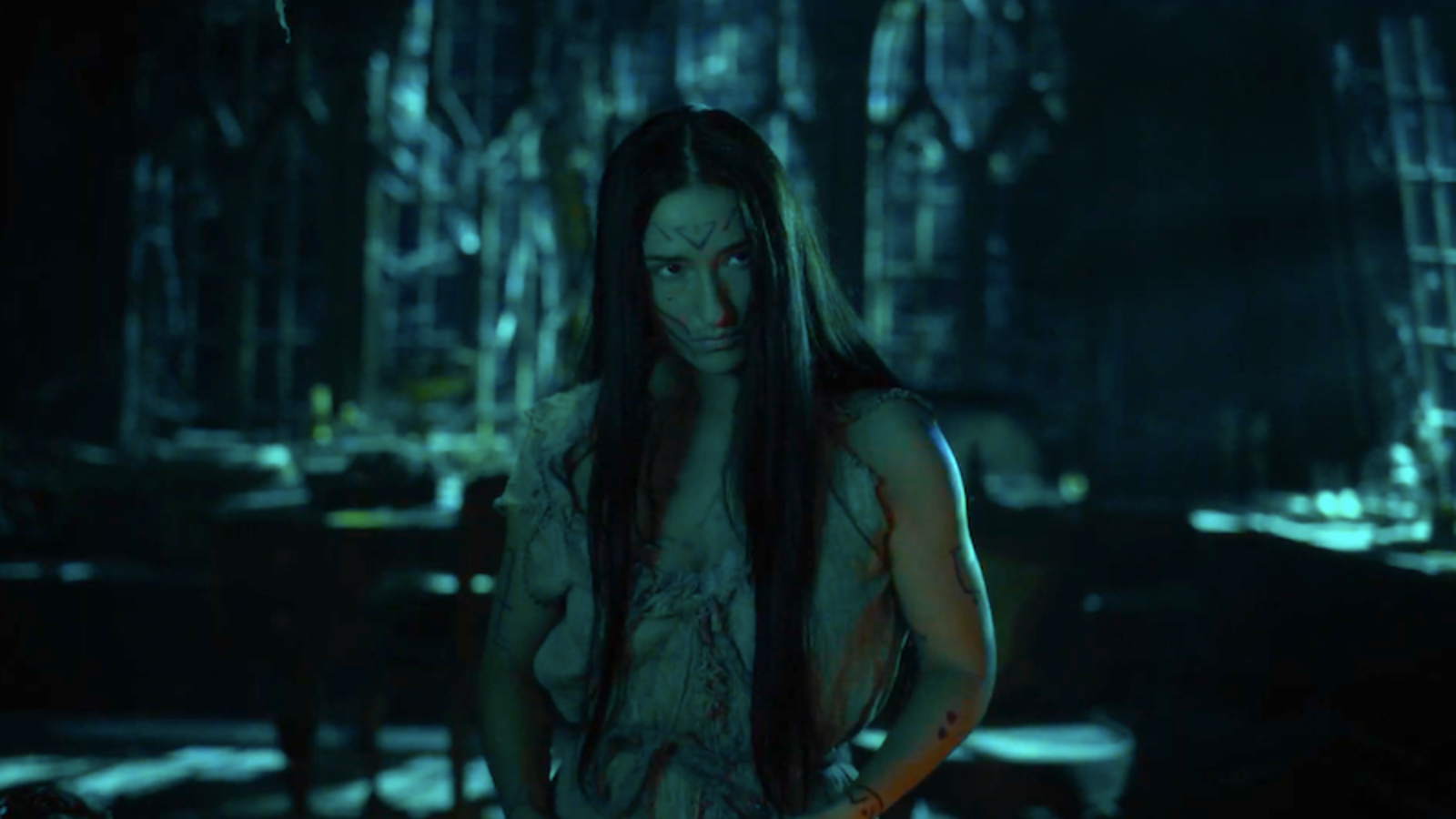
Lovecraft Country, Yahima’s death
Within the span of a single episode, Lovecraft Country introduced a fascinating new Two-Spirit character who wasn’t present in the books but had the potential to shake the plot up in a major way. However, as quickly as we met Yahima, they were unceremoniously killed in one of the series’ more disturbing scenes. What made their death such a letdown was that Lovecraft Country in no way earned the scene, and it served no real purpose other than to further make audiences distrustful of Montrose Freeman, another queer character the show depicted as being brutalized. There’s certainly a different path that Lovecraft Country could have taken to make Montrose attacking Yahima have some larger narrative significance and value to the audience, but what was presented was a far cry from anything like that. — Charles Pulliam-Moore
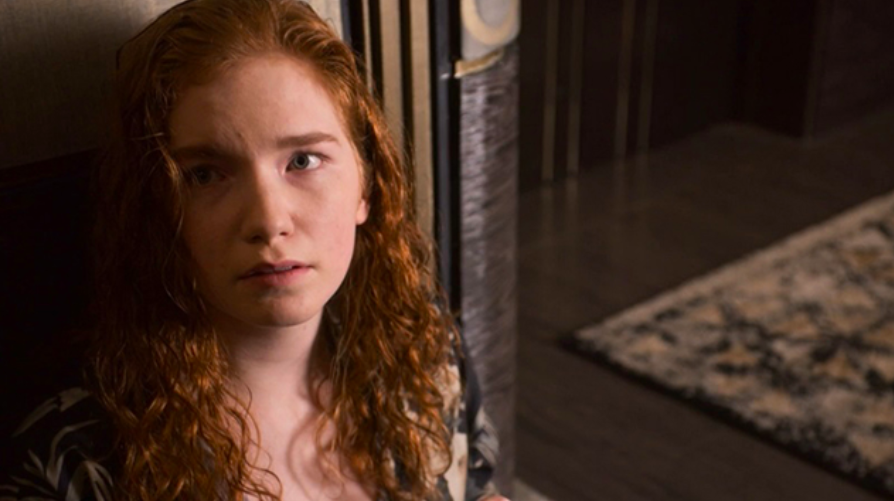
Snowpiercer, the Folger family’s eyeball thing
In its first season, Snowpiercer struggled to strike a tone that made it stand out within the larger landscape of fictional post-apocalypse stories, despite its premise being objective wilder than most. In moments when the TNT adaptation was actively trying to make you understand the hedonistic monstrosity of some of the train’s passengers, it largely missed the mark save for a scene in “Justice Never Boarded,” the fifth episode of the season, and one that provided new insight about just how messed up the Folger family really was.
The idea of a sociopathic teenager killing isn’t all that novel in a world where Law & Order’s been on TV for years, but when LJ popped her father’s prosthetic eyeball into her mouth to soothe her nerves as her parents look on, Snowpiercer tapped into a twisted, disturbing energy that highlighted how generally banal the rest of the show’s villains were. — Charles Pulliam-Moore
50 States of Fright, “Bury me with my golden arm”
Is it supposed to be serious, or is it camp? We may never know. All we know is Sam Raimi’s short-lived horror series on the equally short-lived Quibi got off to quite a start with “The Golden Arm.” Based on an American legend told ‘round the campfire, the horror short starred Rachel Brosnahan (The Marvellous Mrs. Maisel) as a woman who got her arm replaced with a golden prosthetic and became obsessed — refusing to take it off even though it was literally killing her through something called “pulmonary gold disease.”
In a now-infamous moment shared on Twitter, the woman is seen on her deathbed, her husband by her side. Her final words, which she makes him promise to uphold: “When I die, bury me with my golden arm.” Brosnahan swears this whole short film was supposed to be campy and over-the-top. Even if that were true — and it’s so deadpan I have my doubts — it doesn’t really matter. It’s still one of the weirdest and most out-there moments we got this year. Hopefully, it won’t be lost to digital decay, because future generations deserve to know the legend of the Golden Arm…and the woman who wore it to her grave. — Beth Elderkin
The 100, Clarke kills Bellamy
What. A. Fucking. Mess. For most of its run, The 100 had been a dependably enjoyable sci-fi series about some folks who just could not stop fighting. There was a time for it to end, but they kept going and, oof, was it a mistake. In the final season, the writers decided to send our stalwart Bellamy Blake on a sort of vision quest that ended with him siding with the very folks our dear Clark Griffin had been railing against the whole time. It all came to a head when Clarke shot him in the chest for holding onto an important book she wanted to keep secret and then…she left the book behind to GTFO into a portal. A whole arse mess that everyone who loved Bellamy just accepted and move on from incredibly quickly. It was an awful, awful decision in an awful final season. — Jill Pantozzi
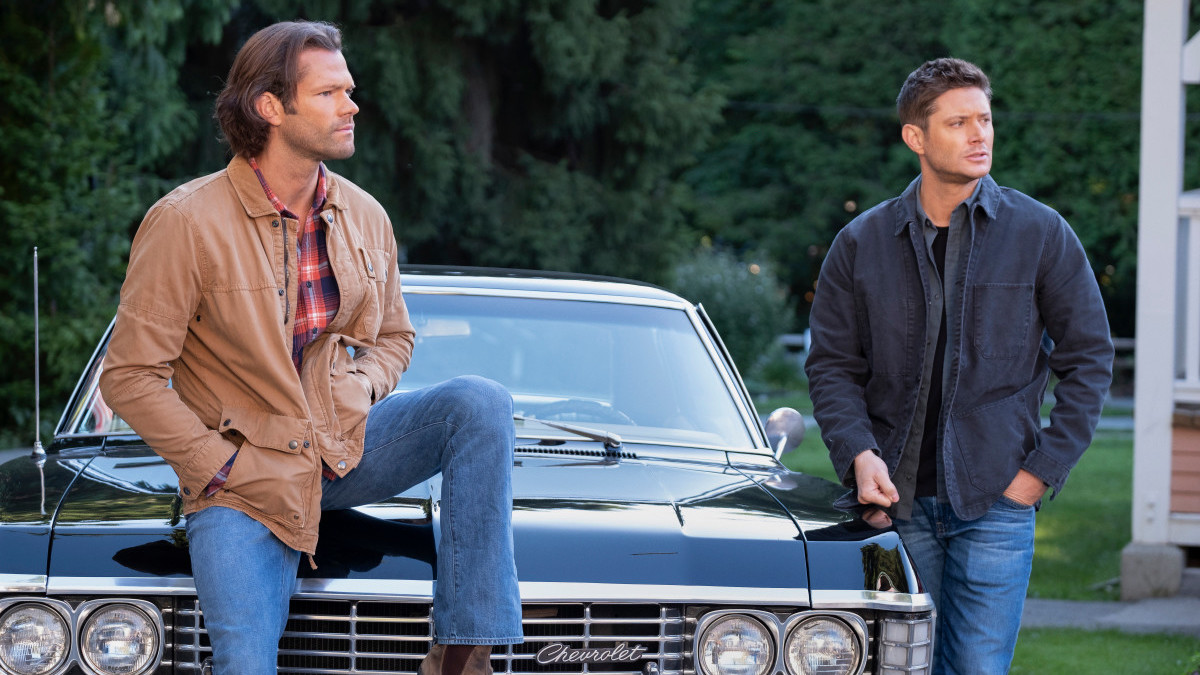
Supernatural, finale death
OK, yes, I made a terrible joke about this in our last year in review article but much like The 100’s WTF Bellamy moment, Dean Winchester’s death in the Supernatural series finale was equally atrocious in the scheme of the long-running series. It would have certainly been called a shark-jump had it happened sooner in the 15-year run.
I say this as someone looking in entirely from the outside on this one, but it seems egregiously rude to the show’s devotees — perhaps one of the most enthusiastic fandoms in the history of fandoms — to kill off one of your two main characters in the finale. Considering all the life or death circumstances the brothers found themselves in time and time again, that one would die unceremoniously impaled, while the other carried on into old age was not just cruel, but a poor sendoff for a beloved character. — Jill Pantozzi
[referenced id=”1658619″ url=”https://gizmodo.com.au/2020/12/the-12-best-and-7-worst-television-shows-of-2020/” thumb=”https://gizmodo.com.au/wp-content/uploads/2020/12/10/ljmq2uvxwtq1vlqu6ggs-300×125.png” title=”The 12 Best (and 7 Worst) Television Shows of 2020″ excerpt=”We might have seen a shortage of new movies in 2020, but one thing we still got a lot of was television shows. This was a year of saying goodbye to many beloved series while introducing some new ones into the fold. Some sparked, others fizzled. Here are the TV…”]
